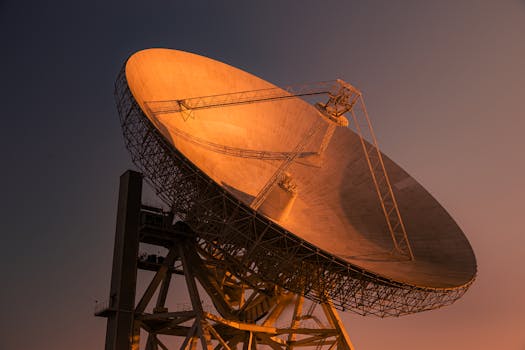Satellite Telecommunications 2023: Key Developments and What They Mean for the Industry

Satellite Telecommunications 2023: Key Developments and What They Mean for the Industry
Satellite Telecommunications 2023 has been a transformative year for the satellite telecommunications industry, with numerous breakthroughs and innovations that are redefining the landscape of global communication. The integration of cutting-edge technologies, such as 5G networks and the Internet of Things (IoT), has opened up new avenues for satellite telecommunications, enabling faster, more reliable, and more widespread connectivity. In this article, we will delve into the key developments of 2023 and their implications for the industry.
The year 2023 has seen a significant surge in the launch of new satellite constellations, with companies like SpaceX, Amazon, and OneWeb leading the charge. These constellations are designed to provide high-speed, low-latency internet connectivity to remote and underserved areas, bridging the digital divide and unlocking new opportunities for economic growth and social development. The deployment of these constellations has also sparked concerns about space debris, highlighting the need for sustainable and responsible practices in the industry.
The Rise of LEO Satellites
One of the most notable trends in satellite telecommunications 2023 has been the rise of Low Earth Orbit (LEO) satellites. LEO satellites, which orbit the Earth at an altitude of approximately 2,000 kilometers, offer several advantages over traditional Geostationary Orbit (GEO) satellites, including lower latency, higher bandwidth, and improved connectivity. Companies like SpaceX and OneWeb are leveraging LEO satellites to provide high-speed internet services, while also exploring new applications such as Earth observation, navigation, and communication.
The growth of LEO satellites has also led to increased competition in the industry, with new entrants challenging established players. This competition has driven innovation, with companies investing heavily in research and development to improve the performance, efficiency, and cost-effectiveness of their satellites. As the LEO satellite market continues to evolve, we can expect to see new technologies, business models, and partnerships emerge, shaping the future of satellite telecommunications.
Advances in Satellite Technology
Satellite telecommunications 2023 has also witnessed significant advances in satellite technology, with improvements in areas such as propulsion, power, and communication systems. The development of more efficient and reliable propulsion systems, such as electric propulsion and advanced ion engines, has enabled satellites to operate for longer periods and travel farther distances. Advances in power generation and storage, such as the use of solar panels and lithium-ion batteries, have also enhanced the performance and lifespan of satellites.
The integration of artificial intelligence (AI) and machine learning (ML) into satellite systems has also become a key focus area in 2023. AI and ML can be used to optimize satellite operations, improve communication protocols, and enhance the overall efficiency of satellite networks. As the use of AI and ML becomes more widespread, we can expect to see significant improvements in the performance, reliability, and security of satellite telecommunications systems.
Regulatory Frameworks and Industry Collaboration
The satellite telecommunications industry is subject to a complex and evolving regulatory framework, with governments, international organizations, and industry associations playing a crucial role in shaping the landscape. In 2023, there has been a growing emphasis on cooperation and collaboration between stakeholders, with efforts to establish common standards, guidelines, and best practices for the industry.
The development of regulatory frameworks that support innovation, while also ensuring safety, security, and sustainability, is essential for the long-term growth and success of the satellite telecommunications industry. Industry collaboration and knowledge sharing are also critical, as companies, governments, and organizations work together to address common challenges, share resources, and capitalize on new opportunities.
In conclusion, satellite telecommunications 2023 has been marked by significant developments and advancements, from the launch of new satellite constellations to the rise of LEO satellites, advances in satellite technology, and the evolution of regulatory frameworks. As the industry continues to evolve, we can expect to see new technologies, business models, and partnerships emerge, shaping the future of global communication and connectivity.



